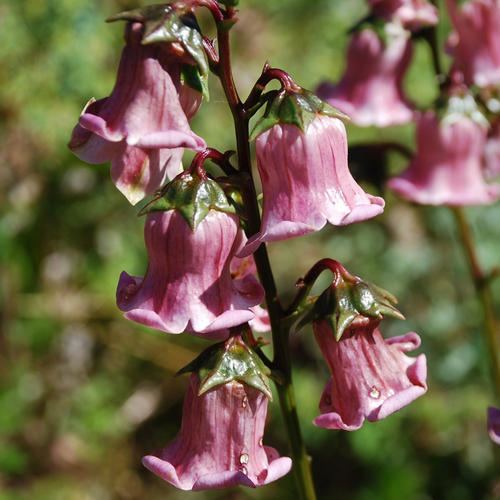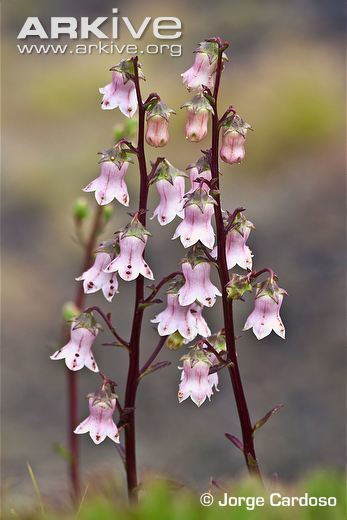Scientific name Azorina vidalii | Species A. vidalii Rank Genus | |
 | ||
Similar Picconia azorica, Laurus azorica, Frangula azorica, Myosotis azorica, Juniperus brevifolia | ||
Azorina garden plants
Azorina is a monotypic genus of flowering plants within the family Campanulaceae, whose sole species, the Azorina vidalii, is endemic to the Azores. Its fragmented population is made up of fewer than 1000 mature plants limited to the coastlines of several of the islands.
Contents

Azor vs azorina 3gp
History

It was first harvested by Watson, along the coast of Santa Cruz on the Azorean island of Flores, during his botanical expedition in 1843. It was initially designated Campanula vidalii by Watson and published in 1844.

Its ecology has been presented in an inconsistent manner; it has been referred to as adapting to cracks in the sea cliffs, or to deposits, and in abrupt and sandy slopes.

The Azorina vidalii was protected by the Bern Convention in 1992 (Annex I) and by the Habitats Directive 140/99 (Diário da República, Anexo 2B) considered a priority species in critical risk; it is an endangered species due to habitat degradation by invasive species, pollution, and development.
The Azorina vidalii diverged from its ancestral descendents around 8.3±1.7 million years ago, associated with it first island of colonization, that of Santa Maria (Olesen et al., 2012), forming some 8-10 million years ago (Serralheiro & Madeira, 1993). Carine et al. (2004) and Fernández-Palacios et al. (2011) also refer to the existence of submarine mounts, formerly immersed, that functioned as stepping-stones from the continent. At the same time, the Azorina vidalii was not vulnerable to the rise in temperature and prefers the zones along the coast to propagate.
